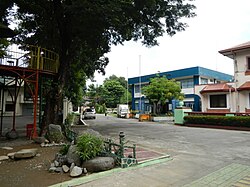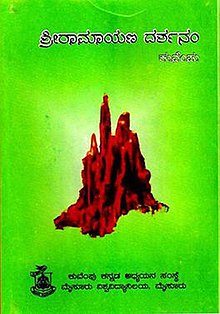소의 공격성
Aggression in cattle소의 공격성은 보통 공포, 학습, 호르몬 상태의 결과지만, 다른 많은 요소들이 소의 공격적인 행동에 기여할 수 있다.
기질 특성
기질적 특성은[1][2] 동물의 행동과 행동을 설명하는 특성으로 알려져 있으며, 동물이 얼마나 쉽게 접근, 취급, 젖 짜기 또는 훈련을 받을 수 있는지에 대한 책임이 있는 특성으로 설명할 수 있다. 기질은 또한 동물이 일상적인 관리를 받는 동안 모성이나 다른 행동을 수행하는 방법으로 정의될 수 있다.[3] 이러한 특성은 동물이 나이가 들면서 또는 동물이 사는 환경이 시간이 지남에 따라 변화할 수 있는 능력을 가지고 있지만, 나이와 환경 조건과 상관없이 어떤 개인은 다른 개체보다 더 공격적으로 남아 있다는 것이 증명되었다.[4] 소의 공격성은 유전적 요소와 환경적 요인 모두에서 발생할 수 있다.[3]
소 사이의 공격성은 황소 사이의 공격보다 더 나쁘다. 뿔이 있는 황소는 번트(경음기로 밀거나 때리기)를 해서 전체적으로 더 큰 피해를 입힐 수 있다. 인간에게 있어서 소의 가장 공격적인 행동에는 발차기, 으스러지기, 그리고/또는 번지기가 포함된다.[5]
공격성 유형
동물에서 나타나는 공격성에는 여러 종류가 있는데, 특히 소는 모성, 사료, 편안함 영향, 고통 유발, 스트레스 유발 공격성을 포함한다.
모성 공격성
소에서 보는 모성 행동에는 산모와 아기 사이의 적절한 유대를 가능하게 하는 행동, 간병 행동, 주의력, 산모가 자손에게 어떻게 반응하는지를 포함하여 많은 요소들이 있다.[6] 이러한 모성 행동은 먹잇감으로 젖을 먹이는 동안 소에게 자주 나타나는데, 이것은 어떤 위협으로부터 새끼들을 보호하려는 모성 본능을 촉발시키고 폭력적인 공격적인 행동을 방어 기제로 사용할 수도 있다.[7][8][9] 소를 포함한 먹이 종의 젖먹이 동안, 새롭고 잠재적으로 위험한 상황에 대한 댐의 공포 반응의 감소는 어린이를 보호하는 방어 공격성의 표현을 용이하게 한다. 그러나 공격성은 자손의 보호에서만 행해지는 것이 아니라 자손에게 향할 수 있다는 것도 증명되었는데, 그 안에서 두려움과 직접 관련될 수 있다.[6]
공격성을 공급하다
이것은 소들이 가진 공간의 양을 잠재적으로 감소시킬 수 있는 높은 양말 밀도로 인해 소들에게서 흔히 볼 수 있으며, 소들이 먹이를 먹을 수 있는 능력을 제한하고 심지어 루미날 환경에까지 영향을 미칠 수 있기 때문이다.[10][11][12] 함께 사육되는 소에 사료와 물을 공급하는 것은 다른 소에 대한 사료 공격성, 공격적인 행동과 관련이 있을 수 있다는 것이 입증되었으며, 부피가 느슨한 소 내에서는 사료 장소가 가장 많은 양의 공격적인 행동을 보이는 것으로 알려져 있다.[15]
편안함 유발 공격성
이것들은 편안함 부족, 부적절한 눕는 공간 또는 물리적 환경이 동물에게 제공하지 못하는 시간과 관련된 공격적인 행동들이다. 소의 편안함은 산업으로서의 생산을 극대화하는 것뿐만 아니라 웰빙에도 중요한 역할을 한다. 많은 집중적인 생산 시스템 내에서, 휴식을 위한 제한된 공간을 보는 것은 매우 흔하며, 이것은 동물에게 적절한 공간을 제공하지 않는 것이 휴식 및 누워있는 행동을 감소시키고, 자극성과 공격적인 행동을 할 가능성을 증가시킴으로써 부정적인 행동과 연관될 수 있다. 모든 생산 시스템이 거짓말을 할 수 있는 제한된 공간과 시간을 제공하는 것은 아니지만, 불편한 노점상 또한 소의 거짓말 행동에 있어서는 주요한 문제로 알려져 있다. 소의 휴식공간 질을 떨어뜨리면 동물의 만성적인 스트레스와 연관된 저발성 뇌하수체 부신축[17][18] 내 반응에 거짓말/휴식행위의 박탈이 입증됨에 따라 휴식시간이 줄고 스트레스, 비정상적이고 공격적인 행동의 가능성이 높아진다.[19] 거짓말하는 시간과 공간은 편안함이 유발한 공격성의 중요한 조절자로서의 역할을 할 뿐만 아니라, 다른 환경적 요소들도 동물의 편안함에 역할을 할 수 있다. 온도는 소 사이의 행동 상호작용에 영향을 미치는 요인으로 나타났으며, 소에게 적절한 냉각 환경을 제공함으로써 또는 열을 제공함으로써 소가 음영에 접근하기 위해 공격적인 행동을 하는 것으로 보여질 것이므로 공격적인 상호작용을 감소시킬 수 있는 것으로 밝혀졌다. 더 많은 그늘에 접근하는 것은 열에 대한 생리적, 행동적 반응을 감소시키는 것으로 알려져 있다.[20]
스트레스 유발 공격성
이것들은 자신이나 다른 개인에게 공격적인 진보를 가져올 수 있는 일종의 스트레스 요인에 의해 야기되는 행동들이다.
스트레스 요인은 동물에게 내부 또는 외부에 실제 또는 인지된 위협을 일으킬 수 있는 물체 또는 사건이다.[21][22] 스트레스 요인은 낙농 소와 같은 농장 동물에서 흔히 볼 수 있는 것으로, 신선한 물체(조련사, 음식 또는 집단 짝과 같은 새로운 물체), 사회적 자극(다른 환경, 새로운 개인) 또는 구속(신체적 구속, 큐비클로 이동, 운송)을 포함한 스트레스 요인들이 많은 복잡한 환경에 살고 있다.[23]
젖소는 특히 생소한 사람 주변에 있는 것과 같은 새롭고 낯선 사건이나 사물에 매우 민감하거나,[24][25] 참신한 먹거리를 선물하는 것으로 알려져 왔다.[26][27][28]
뇌하수체-아드레날린 체계는 부적절한 공간, 사료, 열악한 품질의 주택, 새로운 사물이나 개인, 새로운 생활/주거 시스템 등 다른 환경 스트레스 요인에 매우 민감하기 때문에 스트레스는 소의 성장과 번식에 극도로 부정적인 영향을 미친다.
고통 유발 공격성
통증은 효과적인 상태로 정의되며 인간과 동물 모두에서 진정으로 간접적으로만 측정할 수 있으며, 이는 통증 관리와 관련된 의사 결정에서 일부 어려움을 야기할 수 있다.
많은 것들이 탈선, 꼬리 도킹, 핸들링, 거세, 돛대염, 적막, 감금, 운송을 포함한 고통을 초래할 수 있다.
소떼는 소에서 흔히 볼 수 있는 문제로, 관리 및 주거 시스템이 미흡하고 취급 기술이 미흡한 시설에서 발생할 수 있다. 많은 소들이 고통으로 인해 공격적인 행동(머리부팅, 발성, 밀기)과 비공격적인 행동(핥기, 걷기)을 병행하는 대신 누워서 많은 시간을 보내는 것이 바로 이 문제 때문이다.
예방
낮은 스트레스 처리(LSH)와 같은 기법은 정숙성을 제공하기 때문에 사용될 수 있으며, 적절한 억제 방법은 동물들의 스트레스 수준을 최소화하는데 도움을 줄 수 있다. 비행 구역은 소를 다루거나 옮길 때 고려해야 하는데, 맹점이 있고 주변에 개인이 있으면 잘 알지 못하더라도 쉽게 겁을 먹을 수 있기 때문이다. 환경적 스트레스 요인을 최소화하는 소에게 환경을 제공하면 동물의 복지와 복지를 향상시킬 수 있을 뿐만 아니라 공격적인 행동을 줄일 수 있다.[29]
코티솔과 같은 체내 분비물이나 호르몬뿐만 아니라 절단이나 병변의 징후를 보일 수 있는 소의 상태를 확인하기 위해 정기적인 검사(신체적이고 생리적인 검사)를 해야 한다. 코티솔은 동물의 스트레스 수준을 나타내기 위해 혈액 샘플링, 소변, 침 또는 심박수를 통해 측정할 수 있다.[31]
적층도 평가와 함께 중증도/장소에 따라 적절한 치료를 하는 것, 적층도 검사 시 적절한 치료/예방과 꼬리 도킹, 탈모, 거세, 유방염 적층 등의 절차가 포함될 수 있다.[32]
절름발이 소의 주된 치료법은 교정 후프 페어링으로 종기 배출, 발굽의 구조적 문제 해결, 체중 감소 문제를 해결하지만 소에서 병변이 발견되면 항생제나 기타 조치를 취하여 추가 감염/소변을 줄일 수 있다.[32]
사육 목표를 설정하는 것은 원하는 기질적 특성을 선택할 수 있는 잠재적인 방법이 될 수 있으며, 공격적인 소 사육의 위험을 더욱 줄일 수 있다. 그러나 이 선택 방법이 완전히 정확하고 안전할 수 있기 전에 행동이나 기질 테스트와 같은 일부 테스트가 이루어져야 한다.[33]
참조
- ^ Fordyce, G; Dodt, R.M; Wythes, J.R (1988). "Cattle temperaments in extensive beef herds in northern Queensland. 1. Factors affecting temperament". Aust. J. Exp. Agric. 28 (6): 683–687. doi:10.1071/ea9880683.
- ^ Fordyce, G; Goddard, M.E; Tyler, R.; Williams, G; Toleman, M.A (1985). "Temperament and bruising of Bos indicus cross cattle". Aust. J. Exp. Agric. 25 (2): 283–288. doi:10.1071/ea9850283.
- ^ a b Morris, C.A; Cullen, N.G; Kilgour, R; Bremner, K.J (1994). "Some genetic factors affecting temperament in Bos taurus cattle". New Zealand Journal of Agricultural Research. 37 (2): 167–175. doi:10.1080/00288233.1994.9513054.
- ^ D’Eath, R.B (2004). "Consistency of aggressive temperament in domestic pigs: the effects of social experience and social disruption". Aggressive Behavior. 30 (5): 435–448. doi:10.1002/ab.20077.
- ^ Landsberg, G.M (2018). "Behavioral Problems of Cattle". Merck Veterinary Manual. Retrieved March 27, 2018.
- ^ a b Grandinson, K (2005). "Genetic background of maternal behaviour and its relation to offspring survival". Livestock Production Science. 93: 43–50. doi:10.1016/j.livprodsci.2004.11.005.
- ^ Hård, E; Hansen, S (1985). "Reduced fearfulness in the lactating rat". Physiol. Behav. 35 (4): 641–643. doi:10.1016/0031-9384(85)90155-6. PMID 4070441. S2CID 19056369.
- ^ Fleming, A.S; Luebke, C (1981). "Timidity prevents the virgin female rat from being a good mother: emotionality differences between nulliparous and parturient females". Physiol. Behav. 27 (5): 863–868. doi:10.1016/0031-9384(81)90054-8. PMID 7323193. S2CID 42839515.
- ^ Ferreira, A; Hansen, S; Nielsen, M; Archer, T; Minor, B.G (1989). "Behavior of mother rats in conflict tests sensitive to anxiety agents". Behav. Neurosci. 103 (1): 193–201. doi:10.1037/0735-7044.103.1.193. PMID 2564276.
- ^ Clemmons, BA; Campbell, MA; Schneider, LG; Grant, RJ; Dann, HM; Krawczel, PD; Myer, PR (2020). "Effect of stocking density and effective fiber on the ruminal bacterial communities in lactating Holstein cows". PeerJ. 8 (e9079): e9079. doi:10.7717/peerj.9079. PMC 7195836. PMID 32391208.
- ^ Keeling, L.J; Duncan, I.J.H (1989). "Inter-individual distances and orientation in laying hens housed in groups of three in two different-sized enclosures". Applied Animal Behaviour Science. 24 (4): 325–342. doi:10.1016/0168-1591(89)90060-9.
- ^ Kondo, S.J; Sekine, J; Okubo, M; Asahida, Y (1989). "The effect of group size and space allowance on the agonistic spacing behaviour of cattle". Appl. Animal Behav. Sci. 24: 127–135. doi:10.1016/0168-1591(89)90040-3.
- ^ Jezierski, T.A; Podłużny, M (1984). "A quantitative analysis of social behaviour of different crossbreds of dairy cattle kept in loose housing and its relationship to productivity". Applied Animal Behaviour Science. 13 (1–2): 31–40. doi:10.1016/0168-1591(84)90049-2.
- ^ Phillips, C.J; Rind, M.I (2001). "The effects of frequency of feeding a total mixed ration on the production and behavior of dairy cows". J. Dairy Sci. 84 (9): 1979–1987. doi:10.3168/jds.s0022-0302(01)74641-3. PMID 11573777.
- ^ Miller, K; Woodgush, D.G.M (1991). "Some effects of housing on the social behavior of dairy cows". Animal Production. 53 (3): 271–278. doi:10.1017/s0003356100020262.
- ^ Leonard, F.C; O’Connell, J; O’Farrell, K (1994). "Effect of different housing conditions on behaviour and foot lesions in Friesian heifers". Vet. Rec. 134 (19): 490–494. doi:10.1136/vr.134.19.490. PMID 8073591. S2CID 7059613.
- ^ Munksgaard, L; Simonsen, H.B (1996). "Behavioral and pituitary adrenal-axis responses of dairy cows to social isolation and deprivation of lying down". J. Animal Sci. 74 (4): 769–778. doi:10.2527/1996.744769x. PMID 8727997.
- ^ Ruckebusch, Y (1974). "Feeding and sleep patterns of cows prior to and post parturition". Applied Animal Ethology. 1 (3): 283–292. doi:10.1016/0304-3762(75)90021-8.
- ^ Ladewig, J; Smidt, D (1989). "Behavior, episodic secretion of cortisol, and adrenocortical reactivity in bulls subjected to tethering". Horm. Behav. 23 (3): 344–360. doi:10.1016/0018-506x(89)90048-2. PMID 2793077. S2CID 44509663.
- ^ Schütz, K.E; Rogers, A.R; Poulouin, Y.A; Cox, N.R; Tucker, C.B (2010). "The amount of shade influences the behavior and physiology of dairy cattle". J. Dairy Sci. 93 (1): 125–133. doi:10.3168/jds.2009-2416. PMID 20059911.
- ^ Yamada, K; Nabeshima, T (1995). "Stress-induced behavioral responses and multiple opioid systems in the brain". Behav. Brain Res. 67 (2): 133–145. doi:10.1016/0166-4328(94)00150-e. PMID 7779288. S2CID 13401761.
- ^ Ramos, A; Mormède, P (1998). "Stress and emotionality: a multidimensional and genetic approach". Neurosci. Biobehav. Rev. 22 (1): 33–57. doi:10.1016/s0149-7634(97)00001-8. PMID 9491939. S2CID 14201883.
- ^ Herskin, M.S; Munksgaard, L; Ladewig, J (2004). "Effects of acute stressors on nociception, adrenocortical responses and behavior of dairy cows". Physiology and Behavior. 83 (3): 411–420. doi:10.1016/j.physbeh.2004.08.027. PMID 15581663. S2CID 25795711.
- ^ Hemsworth, P.H; Price, E.O; Borgwardt, R (1996). "Behavioral responses of domestic pigs and cattle to humans and novel stimuli". Appl. Animal Behav. Sci. 50: 43–56. doi:10.1016/0168-1591(96)01067-2.
- ^ Munksgaard, L; Pasillé, A.M; Rushen, J; Herskin, M.S; Kristensen, A.M (2001). "Dairy cow's fear of people, social learning, and milk yield and behaviour at milking". Appl. Animal Behav. Sci. 73 (1): 15–26. doi:10.1016/s0168-1591(01)00119-8. PMID 11356287.
- ^ Herskin, M.S; Munksgaard, L (2000). "Behavioral reactivity of cattle toward novel food: effects of testing time and food type of neighbors". J. Animal Sci. 78 (9): 2323–2328. doi:10.2527/2000.7892323x. PMID 10985406.
- ^ Herskin, M.S; Munksgaard, L; Kristensen, A.M (2003). "Testing responses to novelty in cattle: behavioral and physiological responses to novel food". Animal Sci. 76 (2): 327–340. doi:10.1017/s1357729800053571.
- ^ Herskin, M.S; Munksgaard, L; Kristensen, A.M (2003). "Behavioral and adrenocortical responses of dairy cows toward novel food: effects of food deprivation, milking frequency and energy density in the daily ration". Appl. Animal Behav. Sci. 82 (4): 251–265. doi:10.1016/s0168-1591(03)00087-x.
- ^ a b Tirloni, R.R; Rocha, F.A; Lourenço, F.J; Martins, L.R (2013). "Influence of low-stress handling on reactivity score and pregnancy rate during fixed-time artificial insemination in Nellore cows". Breeding and Reproduction. 42.
- ^ Millman, S.T (2013). "Behavioral Responses of Cattle to Pain and Implications for Diagnosis, Management, and Animal Welfare". Veterinary Clinics of North America: Food Animal Practice. 29 (1): 47–58. doi:10.1016/j.cvfa.2012.11.007. PMID 23438399.
- ^ Schwinn, A.C; Knight, C.H; Bruckmaier, R.M; Gross, J.J (2016). "Suitability of saliva cortisol as a biomarker for hypothalamic–pituitary–adrenal axis activation assessment,effects of feeding actions, and immunostimulatory challenges in dairy cows". J. Animal Sci. 94 (6): 2357–2365. doi:10.2527/jas.2015-0260. PMID 27285912.
- ^ a b Laven, R.A; Lawrence, K.E; Weston, J.F; Dowson, K.R; Stafford, K.J (2008). "Assessment of the duration of the pain response associated with lameness in dairy cows, and the influence of treatment". New Zealand Veterinary Journal. 56 (5): 210–217. doi:10.1080/00480169.2008.36835. PMID 18836500. S2CID 5200266.
- ^ Gibbons, J.M; Lawrence, A.B; Haskell, M.J (2009). "Consistency of aggressive feeding behaviour in dairy cows". Applied Animal Behaviour Science. 121: 1–7. doi:10.1016/j.applanim.2009.08.002.


